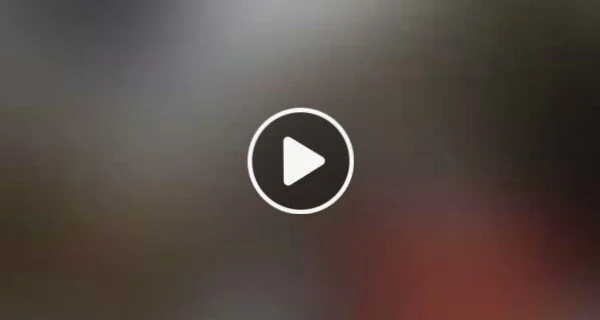

John and the Hole: Plot unwinding and creepy ending explanation
Opening: Hair-raising psych thriller ’21
john and the hole is a 2021 psychological thriller that develops the dark-twisted boyhood of 13-year-old John. The director, Pascual Sisto, presents a creepy premise in which John drugs his family and keeps them in his unfinished bunker to find out what it’s really like to become an adult without boundaries and supervision. Setting himself free, John submits to his curiosity for adulthood but as the experiment gets darker, the true nature of John’s experiment comes to the light of day. In this paper, we will consider the plot, analyze the ending of the film, and discuss the hidden themes and implications of this disturbing film.
Plot: John’s twisted experiment with adulthood
John, played by Charlie Shotwell, is a very curious and inquisitive teenager who wants to experience the freedoms given to adults and the privileges that come with adulthood. He begins to question his parents and older sister about their lives and even wonders what it feels like to be an adult. However, his curiosity turns bad when he drugs his family and holds them captive in a bunker in the woods near their home. With his family out of the way, John embraces the freedom to follow his every impulse.

Living a dull and empty life, John seeks to fill the “hole” in his life by stepping into the adult world. He eats junk food, drives the family car, takes money from their savings account and even invites a friend over to swim in their pool. But while living in an apartment is fun, adulthood is not the exciting adventure it was made out to be, and he will eventually find himself alone and wishing for his family’s speedy return. Eventually, about a week later he lets them out of the bunker, but nothing will ever happen again.
Conclusion: A disturbing normalcy has returned
John’s sister Laurie, father Brad – played by Michael C. Hall, and mother Anna – played by Jennifer Ehle – swim from the bunker to the swimming pool, with John lying face down in the swimming pool. In fact, Brad jumps into the pool in a panic, but it turns out that John is fine. Relieved that their son is all right, John’s family doesn’t say a word about what happened. His family is not going to scold him for the way he acted in the pool. In the closing scene, they are all sitting at the dinner table as if nothing happened, which the audience found strange.
Motives Examined: Why did John drug and imprison his family?
What drives John to drug abuse and entrap his family is a need for freedom and curiosity about the adult world. He wants to feel free, unrestricted and without consequences, or so he thinks, just as adults do. His family, out of the way, lets him do whatever he wants without restrictions, supervision or rules. However, his experimentation takes a dark turn as this newfound freedom is not the fun adventure he thought it would be.

John’s behavior is also a perverse quest to test the limits of adulthood, to test the boundaries of his independence. He breaks all bonds of parental supervision in an attempt to fill the “hole”, to find the thrill he feels in life when he grows up. But at the same time, all his actions create the feeling that there is more to his mind than meets the eye, and that his mental state makes future violence all but impossible.
Understanding John’s mental state: a portrayal of restlessness
Overall, John’s actions and behaviors throughout the film left many viewers and critics really speculating about what was really going on inside his mind. Some critics even went so far as to label him a sociopath or, apparently, a psychopath. Otherwise, the film does not provide a diagnosis either way. However, it is quite clear that John is definitely struggling with some sort of mental illness or psychosis. His apparent lack of empathy and sense of joy in people’s misfortune, his manipulative behavior, and his blatant disregard for the well-being and feelings of everyone on his list show that there is more going on here than simple curiosity or rebellion.”

In a recent interview, director Pascual Sisto himself has acknowledged the disturbing nature of John’s behavior and compared it to real children in society who are committing serious crimes such as school shootings. Sisto believes that these could be warning signs that could lead to something much worse, such as violent acts later in life. The film leaves the interpretation of John’s mental state open to the audience so that they can decide for themselves whether he has a deep potential for more violent behavior – and is likely to do so in the future.
The price of adult freedom: a disturbing analogy
film title, “john and the hole,” takes on a double meaning as the narrative unfolds. In one sense, it’s a literal hole or bunker in which John traps his family. But symbolically, it’s just how empty and mundane John’s life is, and how he desires to fill that void with the adventure and freedom he believes will come with adulthood. This comparison itself becomes very real when John realizes that the party, which was supposed to be adulthood, leaves him empty and alone.

Thus, the ending of the film, with everything returning to the same state and no one speaking about what had happened, only serves to reinforce this tone of darkness. This gives the reader the impression that John has not been punished for his actions. Thus, the emptiness and curiosity continue in a perpetual cycle. The fact that John gets away with his disturbing actions is an element of adulthood that is more than disturbing – adults can often get away with grey actions without any kind of retribution.
The role of the family: complicity and denial
One of the most important parts of the ending is the reaction of John’s family to what he has done. Instead of confronting John about this disgusting experiment, they ignore it and go back to the way things were. This reaction can be seen as a number of things. It could mean denying or protecting John from consequences on the one hand, or on the other, the parents’ inability to see how bad his problems were and what needs to be done about them.

However, what is most disturbing is the silence at the dinner table that night, where no context is given to what happened. This raises more questions about how willing they are to look beyond what John did, such as accepting and beginning to blame for setting up an environment that would push him to such extremes. The clear invitation for viewers is to think about the role of parental guidance and what happens when a young person’s mental health needs are ignored.
Freedom restrictions: by the dark side of adulthood
The theme of freedom is one that can essentially be seen in the film, whereby John wants to feel independent and enjoy all the freedoms of adulthood. However, the film draws disturbing parallels in the actions committed by John in relation to adults. Just as John gets away with his highly disturbing experiment, no consequences can be seen for the questionable behavior of the adults in the film. These two parallel cases draw a much darker interpretation of adulthood where people get away with no consequences for their irresponsible, harmful actions.
The film commands a reevaluation of the meaning of freedom and the uncertainties that come with it. This statement defies John’s proud notion of what adulthood is all about. It shows that the reality is far more complex. The fact that the ending is open and without any definite outcome serves to highlight the dark element of freedom that was shown through the film’s themes. Of course, its curiosity ends without punishment.
A Dark Turn of Events: Lily’s Character
Further complications are introduced by the introduction of the character of Lily, the girl her mother told about John and the hole. Her mother prepares her to survive alone for a year, which is almost a form of preparation, to become a grown-up person, going through the obstacles associated with it. This provides a gendered view of children: thus daughters are prepared to survive, sons are given more freedom and space.
Overall, Lily’s story hints at the darkness of John’s future. The underlying message is that his actions will eventually leave deep scars on those around him, even though they are not the direct victims of his experiment. The film leaves the audience thinking about the consequences of John’s actions and the darkness of the future for those around him.
Conclusion: Exposing the disturbing truths of adulthood
john and the hole is a psychological thriller that is an excellent investigation of the twisted teenage mind as it portrays the two-sided coin of curiosity and independence in a very disturbing way. The ending without any resolution or outcome shocks the audience as a shock and leaves them wondering what the future holds for John. Most importantly, his family was silent and returned to routine, indicating that the vicious cycle of emptiness and curiosity might continue and eventually cause great harm to his future life.
It invites one to question what adulthood is, what are the consequences of freedom and responsibility, and mature curiosity. The idealized concept of adulthood it presents is far more complex than the nuances John truthfully questions. As the final credits roll, we are left with even more questions than answers, forcing us as viewers to ponder some of the underlying themes as well as implications in this very disturbing but captivating film.



